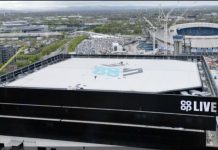A report out this week has backed plans for transformed East West rail connections in the North of England, bringing together the major cities of Liverpool, Manchester, Leeds, Bradford, Sheffield, Newcastle and Hull to work as an effective and powerful economic unit.
Beyond HS2 – a plan for a National Rail Strategy, by the thinktank Greengauge 21, offers a comprehensive view of what Britain’s railway should look like by the middle of the century.
Based on almost a year of work and analysis, the report concludes that our rail strategy should for the first time have a specific objective – to transform national productivity; using connectivity to put rocket fuel into what should be a national drive to transform productivity levels.
That thinking leads to a proposal for a re-orientation for Britain’s railway – from “hub-and-spoke” based centred on London to a fully national railway network that links a set of upgraded city centre “hub” stations. HS2 would be turned from a “Y” to an “X” shaped railway, with a new connection in the West Midlands meaning that HS2 trains could operate from Bristol and Cardiff to destinations in the Midlands, the North and Scotland.
Besides the Transpennine Link, the authors suggest that Manchester Airport has new services from Sheffield and Chester/North Wales using a new rail connection and unlocking a rail network capacity bottleneck in the process.
On a national scale, they propose fully integrating HS2 into the national network and adding an upgraded fast route from Birmingham to Bristol Parkway to carry HS2 trains, which would continue to the South West and South Wales, bringing those parts of the country into the HSR network as well as a major upgrade of the East Coast mainline for the first time since the 80s, so passengers in the North East are not dependent on indirect HS2 services via Birmingham to reach London.
Plans should lead to achieving a 3h 15m journey time from Scotland to London and shortening rail journeys from Edinburgh northwards dramatically and series of new and improved city region rail networks to support city-based growth strategies.
Commenting on the publication of the report, one of its five co-authors, Greengauge 21 Director Jim Steer said “Britain lacks a long term national railway strategy beyond HS2. We need a plan to put rocket fuel into our economic productivity and today’s report sets out proposals to do so.”
“It is vital for the future of the country that no region is left behind, and the national railway strategy needs to reach all parts of the country. To transform productivity across the whole of Britain, we need to transform the connectivity of dozens of cities the length and breadth of the country. Fundamentally, we need to completely re-orientate the railway from a ‘hub-and-spoke’ centred on London to a fully national network.”
“What we have published today provides a wealth of new analysis on connectivity strengths and weaknesses across the country. It is often said that rail needs a ‘guiding mind’ and we hope this report will show just what can be achieved by being prepared to think strategically.”







